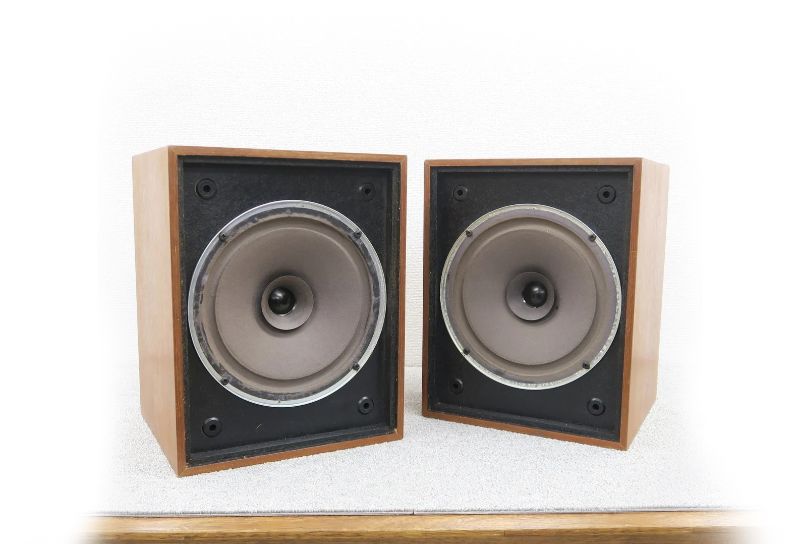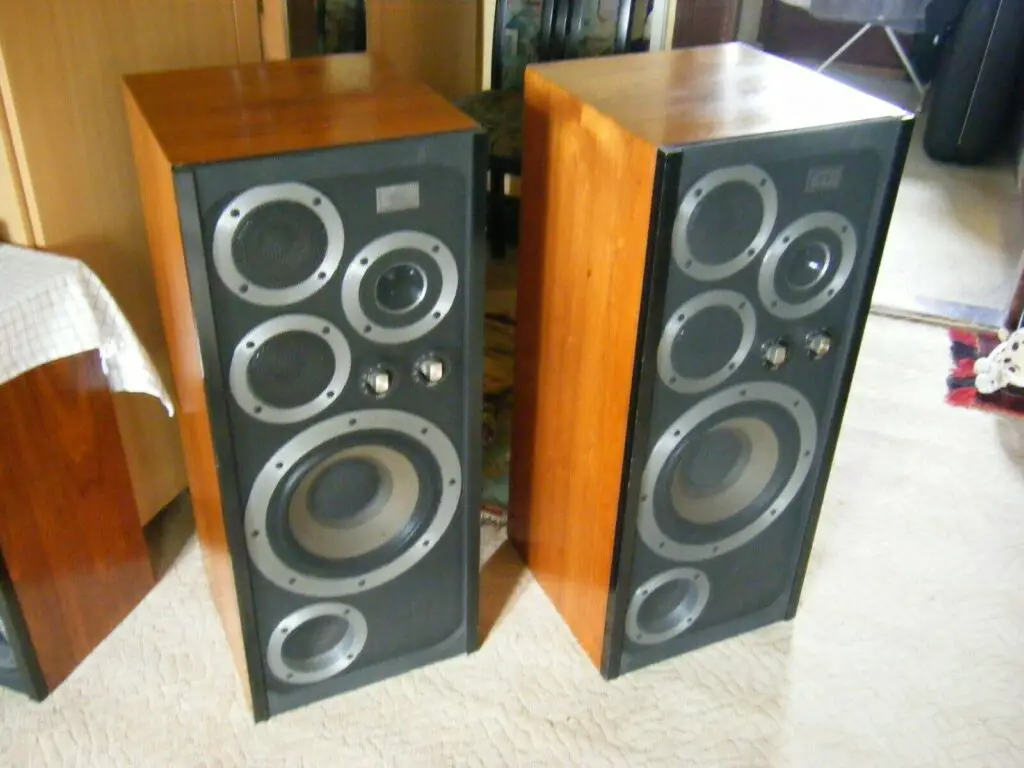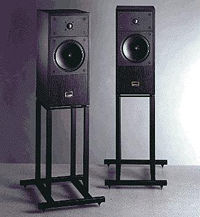The Videotone Minimax is a fantastic tiny loudspeaker that has been overlooked by history. The fact that Videotone was not British, unlike over ninety percent of speakers at the time, adds to the intrigue of the story. The UK importer, managed by former Mullard and Philips engineer Cliff Hardcastle, was known as “Videotone,” whereas the Hungarian business that designed and manufactured the Minimax series was known as “Videoton.” Founded in 1938, the latter became state-owned in 1955 and specialized in consumer electronics until 1991, when it was privatized.
Cliff says, “When I first heard the Minimax, I was blown away by how good it sounded — in my opinion, it was on par with, if not better than, the BBC LS3/5a.” At Videoton, which was still a huge corporation at the time, they had some incredibly talented engineers.” He founded Videotone Ltd. and began touring hi-fi concerts, the first of which was held in Harrogate in 1972. It was well received, and he soon had 150 dealers and rave reviews for the speaker. Because the British economy was battered by inflation at the time, the price rose dramatically; for example, in 1977, the price was £46, which was far less than the LS3/5a but significantly more than many bookshelf designs. Cliff recalls purchasing it “very cheaply” from Videoton in Hungary, which was in desperate need of foreign currency and jobs for its staff.
Small speakers were scorned by the mainstream hi-fi community at the time, with only the BBC LS3/5a being treated seriously, and even that was an acquired taste. Only in the 1980s did speakers get smaller, with models like Wharfedale’s Diamond and eventually Acoustic Energy’s AE1 becoming popular. The little Videotone had limited appeal in the 1970s. It was touted by highbrow hi-fi magazines as a low-cost entry point into Linn LP12 ownership; by purchasing these small speakers, they argued, you’d have more money left over to purchase their cherished Sondek! It was frequently found on the end of a Rega Planar 3 with Nytech CTA252 receiver, and it generated a lot of noise – however Cliff recalls one reviewer recommending that Amstrad music center owners ditch their supplied speakers in favor of a pair of Minimaxes, and sales surged!
“The cabinets were the key to the speaker,” Cliff explains. “They weren’t veneered MDF; they were actual teak or walnut wood.” You couldn’t get that type of quality for that money anywhere else, and it sounded great. The drivers were also excellent; the mid/bass unit, in particular, had a natural rubber surround that produced a wonderful sound. The paper cones that had been handled were very expertly done, and the end result startled everyone who heard them. It was also significantly deeper bass than many imagined for a speaker that was only 265mm high, 150mm wide, and 225mm deep.
Officially, there was just one Minimax, which was fine-tuned during the course of its long production run. “The corporation was preoccupied with the German market,” he recalls, “and we used to see them making little modifications with that in mind.” The speaker had a 100mm paper cone tweeter and a 125mm mid/bass driver, the latter of which was of excellent quality, with rigid diecast aluminium construction and a strong magnet. The 4kg wood cabinet was quite heavy for its size and was sealed to offer infinite baffle loading, resulting in a low efficiency of around 83dB/1w/1m. By today’s standards, this is abysmal, yet it’s worth noting that it’s extremely close to the BBC LS3/5a. The speaker’s nominal impedance was 8 ohms, and the highest power handling number was 20W – albeit this was reduced to 15 when using a continuous sine wave!
Numbers like these demonstrate how far hi-fi has progressed over the last four decades; they’re startlingly terrible, to be sure, but what’s intriguing is that when you sample the Minimax, it sounds significantly better than the measured performance suggests. Indeed, this speaker proudly displays the DIN 45500 hi-fi certification; this was a German industrial standard for how good hi-fi should perform, and meeting it wasn’t easy. Despite its small size and low price, the Minimax was a high-quality item in its day. The frequency response was stated to be 55Hz to 20kHz, which is extremely impressive for the price.
The Minimax underwent several transformations. Up to the turn of the century, Minimaxs had DIN speaker sockets on the back, while later versions had banana sockets. The £75 GB3, a higher-end British-designed variant with a fractionally larger size and sophisticated fabric dome tweeter, was produced by Videotone in 1978. Although the power handling grew to 40W maximum music power near the end of the Minimax’s life, all models measured nearly identically. The GB3 is arguably the best-sounding derivative, while some claim it lacks the original’s liveliness.
Anyone hearing a well-preserved – or restored – Minimax for the first time is always taken aback by how detailed, open, and musical it sounds. The solid cabinet, which lacks a reflex port, produces a tight, precise, and tuneful sound that is almost completely absent of bass boom. The speaker is remarkably clear and detailed, as well as active. It’s more enjoyable to listen to than an LS3/5a, and it’s almost as open and detailed. The bass is unmistakably pleasing and extends lower than many speakers twice its size. Treble is open and lovely, and on the GB3 it transforms into a work of art. As you’d expect from such a little box, imaging is outstanding, with the main drawback being its restricted power handling; this speaker is best suited to smallish venues and low to medium volume levels. Overall, the Minimax’s best feature is what people used to refer to as its “tone”; it sounds smooth, pleasant, and welcoming, making extended listening a pleasure. Despite this, it isn’t too coloured to the point where everything sounds like it was recorded in the same room. The balance of this small speaker was perfected by Videoton.
This odd Soviet mini-monitor may not be to everyone’s taste, but it will appeal to a large number of people. Prices start at £50, but the bass surround may need to be replaced, which Anapeach can accomplish expertly. Meanwhile, the little state-owned hi-fi brand that no one had heard of back in the 1970s has done quite well. Videoton has evolved into a Contract Manufacturing company, the EU’s sixth largest of its kind. It has 10 manufacturing facilities, 9,900 people, and €454 million in assets. The Minimax is a relic of a brief but memorable period in the company’s history.







